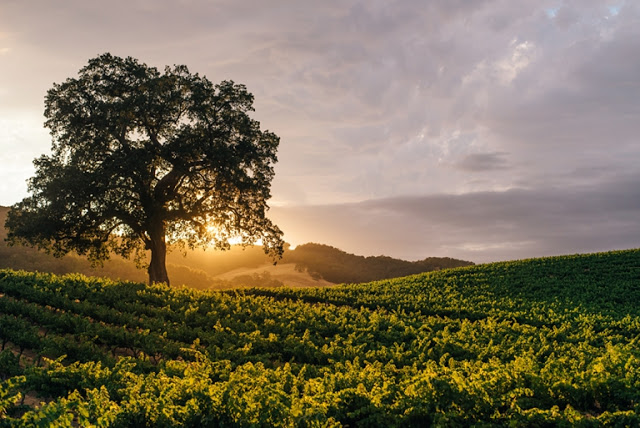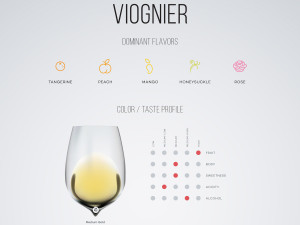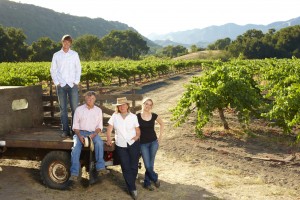JUNE CENTRAL COAST WINE COUNTRY EVENTS

You know you want to spend the day in wine country!


You know you want to spend the day in wine country!
If you’ve ever visited a working vineyard and beheld the vines, you’ve undoubtedly heard the terms bandied about: Bud Break, Fruit Set, Veraison. But how does that seemingly barren chunk of wood you see in December become the fruit laden cornucopia of grape splendor we see in September? To understand, we look at the yearly growth cycle of the wine vine. Come along!
From leaf fall to the beginning of growth in spring, grape vines are dormant and consist entirely of woody tissue. Relatively little activity occurs during this period. Root growth can still occur unless soil temperatures are too cold to support growth. Cold hardiness within rootstocks can vary depending on genetics, temperature, and temperature fluctuations. Many of the hybrid grape varieties are created to address the lack of hardiness in varieties of grapes in the species Vitis vinifera. As a result, hardiness varies considerably across varieties. In cold climates, hardy hybrid varieties are necessary for grape production
As temperatures warm in the spring, stored starch is converted to sugar and sap begins to move in the vine. This can be seen on warm spring days when pruning wounds begin to “bleed”. As temperatures warm, buds begin to swell, then burst (break). The newly emerged shoots grow very rapidly, and will continue to do so for several weeks in the absence of stress. Soon clusters become visible, usually opposite the third and fourth leaves on a shoot.
After a few weeks, depending on weather conditions, clusters begin to swell, and soon flowers open. The flowering period can be as short as a day or two under warm, dry conditions, or as long as a month under very cool, wet weather conditions. Grapevines are still mostly reliant on stored carbohydrates from the previous season for their energy at this point. After pollination, the flowers abscise and the newly-formed berries go through a rapid period of development due to cell division. Flower cluster primordia for the following season begin to originate in buds at this time, and will continue to develop until veraison. Leaves well exposed to sunlight during this time will result in more fruitful buds in the following growing season. Once the berries are well formed, cell division largely ceases and further berry growth is mostly due to cell expansion. Many leaves on each shoot are fully expanded, and the vine no longer depends on stored carbohydrates for its energy source. For the next few weeks, shoots and berries grow very rapidly.
Approximately five to seven weeks after fruit set, veraison begins. Berries expand further, begin to soften, and accumulate sugar. The color on red cultivars is readily apparent, while the visual indicators of maturity on white cultivars are more subtle. During the next four to six weeks, sugar, pigments, and other flavor compounds increase in the maturing fruit, while organic acids decrease and change forms. Unless there is an excess of water or fertility, shoot growth slows greatly or ceases. The bark of green shoots begins to turn brown from the base, becoming woody by the end of the period. This process is called lignification. On managed plantings, the veraison period ends with harvest
After harvest, grapevine leaves continue to photosynthesize until frost if temperatures are warm enough. This is a very important period for the vines to accumulate carbohydrates for future growth. As temperatures fall, vines gradually become more cold hardy, and sugars are converted to starch to be stored for the winter, mostly in perennial structures such as roots and trunks. After leaf fall, vines continue to acclimate to cold weather, but no more carbohydrate accumulation occurs.
Want to learn more about how wine is made? Join us at Breakaway Tours and get a behind the scenes look at how it Root to Fruit, from Grape to Glass! Call or email todaymailto:info@breakaway-tours.com or 800-799-7657.
Viognier: A White Wine for Red Wine Drinkers?
As a self -professed lover of red wine, you may ask: is there a white wine you would recommend for red wine lovers? Something with body and bollocks, that I can enjoy as the days heat up and I need something cool in my glass?
The answer is YES. The answer is Viognier.
In 1965 only a miserable 20 acres of Viognier (pronounced Vee-on-yay) grape existed in its Northern Rhône homeland appellation of Condrieu.
Amazing, since it is believed the grape had grown here for at least 2000 years, possibly transported to the Rhône from its birthplace in Dalmatia by the Romans.
Since 1965 the grape and its wine has steadily increased in popularity and in its quality, elevating it to ‘serious drinker’ level.
Condrieu is at the northern end of the Northern Rhône. It consists of seven communes located on steep terraced hills, where Viognier is the only variety of grape allowed in this appellation devoted solely to white wine. Any bottle originating from Condrieu is 100% Viognier. It is said that low yields, difficult growing conditions and late harvesting contribute to the exceptional, concentrated flavors of Condrieu Viognier.
During the 1990s winegrowers from other parts of the Rhône and further afield in France saw the mounting interest in Viognier. Initially the grape was grown to blend with other whites – and reds, bringing extra character to well know varieties, and softening the Syrah wines of the Côte Rôtie. Temperamental it may be but versatile for certain. In present day vineyards on the Central Coast of California it is increasingly being grown in its own right enlarging the range of pure Viognier wines on the shelves of specialist wine shops and supermarkets alike. Many of these wines are lighter, less concentrated that their Condrieu cousins. Nevertheless they retain something of the distinctive Viognier character of spring fruit and floral bouquet and they sell for around the $20-$30 mark …… well within the price range of most white wine drinkers.
 Viognier is a remarkably difficult grape to grow. It is prone to mildew, produces notoriously low and unpredictable yields, and needs to be picked when fully ripe. If it is picked too early it fails to develop its classic aromas and rich tastes. But despite, or perhaps because of, this precariousness fans enjoy the most amazing clear, golden color and the aroma of flowers and fruits in their glass. Many are surprised by the taste; the color and nose hinting at something sweeter but the wine itself showing dry with a variety of nuances both on the palate and finish.
Viognier is a remarkably difficult grape to grow. It is prone to mildew, produces notoriously low and unpredictable yields, and needs to be picked when fully ripe. If it is picked too early it fails to develop its classic aromas and rich tastes. But despite, or perhaps because of, this precariousness fans enjoy the most amazing clear, golden color and the aroma of flowers and fruits in their glass. Many are surprised by the taste; the color and nose hinting at something sweeter but the wine itself showing dry with a variety of nuances both on the palate and finish.
In appreciating the surprising dryness of this wine don’t miss out on the few bottles of late harvested, dessert wines that winemakers are producing.
This is the wine for everyone including the ABCers (Anything But Chardonnay), those are desperate for an alternative white wine that shows some character.
It is best known for its apricot, peach and spice flavors, together with high alcohol (often over the 13% mark) and medium acidity. As with many white wines it is generally best consumed young, although the classic Viogniers of the North Rhône (and increasingly wines from the oldest vines in California and Australia) can develop well for much longer.
You can drink it with many foods or none. Try matching it with spicy Thai cuisine, Chinese takeout, Mexican dishes, medium to strong salty cheeses, strong flavored fish dishes, pork and chicken and fresh fruit.
Call Breakaway Tours today to explore the amazing Viogniers offered right here on the Central Coast! Here are a few we’re especially loving now:
Ranchero Cellars 2013 Viognier, Paso Robles $30
Zaca Mesa 2014 Viognier, Santa Ynez $18
Tolosa 2015 Viognier 1772, Edna Valley $38
2002 TH Estate Wines The Hedge, Paso Robles/ $60
2013 Calcareous Estate Syrah /$49
2007 Stanger Library Reserve Syrah / $48
2014 Wild Coyote Adelaida District Syrah / $25
One of the absolute most exciting things about Spring on the Central Coast? That’s right, its Wine Festival Season! Not sure which one is right for you? Check out the options below, grab your sandals and sunscreen and celebrate the vine with these amazing events.
Hospice du Rhone
Hospice du Rhone is An international vintners’ association that provides promotional and educational opportunities to the wine industry, trade and Rhône enthusiasts. Each year over 1,200 Rhône lovers converge in Paso Robles, California USA for the annual Hospice du Rhône Festival. The group is a mix of Rhône producers and importers, wine industry representatives, restaurateurs, Sommeliers and enthusiasts who possess an unwavering passion for the 22 Rhône varieties. The event hosts upwards of 160 Rhône wine producers and importers, from throughout the world at the Friday Rhône Rendezvous and the Saturday Grand Tasting. These worldly Rhône wine producers and imports gathered from France, South Africa, Australia, Spain, Chile and the USA. The states represented from the USA are Arizona, California, Oregon and Washington.
Tickets to attend the Paso Robles installment are now on-sale through the organizations website! This weekend, dedicated to nothing but Rhônes, will include four in-depth educational seminars, two spirited tastings and three lively meals. Attendees should gear up for a weekend of serious Rhône fun brimming with Rhône wines, Rhône zealots and Rhône producers from throughout the world. Passes are currently on sale for the Paso Robles Installment of Hospice du Rhône taking place April 14 – 16, 2016 at the Paso Robles Event Center in Paso Robles, California. Event and Seminar passes begin at $100. To purchase passes and to learn more visit www.hospicedurhone.org.
CAB’s of Distinction Media, Trade & Sommelier Events
If you’re ready to get your CAB on, here the Festival for you! With Seminars like :Know Your Cab Clones: Learn how to differentiate the different clones of Cabernet in Paso, and how choices in the vineyard are elevating Paso Robles wines. Join this session for an opportunity to taste and compare five different Cabernet Sauvignon clones and discuss vineyard and winery practices with the winemaker panel.
And there’s a bot o’ the ol’ competish here as well. Take the final seminar – The Judgment of Paso. Just as the Judgment of Paris proved that California Napa Valley Cabernet and Chardonnay were on a level playing field with Bordeaux in 1976, we aim to show that Paso Robles has risen to a global stage along with celebrated appellations like Napa and Bordeaux in producing superior Cabernet Sauvignon. Join this session for an opportunity to blind-taste and compare eight different Cabernet Sauvignons along with a panel of top sommeliers. After each wine is tasted, and its region strategically analyzed and guessed, it will be revealed!
If you’re in the mood to sip more than study, there’s the En Primeur & Current Vintage Tasting: Be the first to sample the latest vintages from both the barrel and just-released bottle from all 22 member wineries.
Info can be found at the Paso Robles Cab Collective’s website www.pasoroblescab.com
Earth Day Food and Wine Festival
The Earth Day Food & Wine Main event delivers a top quality food and wine experience paired with a casual, low-key atmosphere, all while celebrating the passionate people behind a sustainable food movement. Nestled under the oaks at Castoro Cellars in Templeton, California on April 23, premiere entry begins at 1pm, with general admission at 2pm. Wear your boots, wear your flip-flops. Relax at VIP tables, or enjoy yourself picnic style. Event proceeds benefit educational scholarships for relatives of farmworkers and Spanish education programs of the Vineyard Team.
Borne from the desire to share sustainable wine and food with hungry eaters and caring connoisseurs, Earth Day Food and Wine has become the acclaimed culinary experience of the season. Forget the carrot sticks—these chefs, farmers and winemakers are serving up sustainable fare that dares to be delicious.
For ten years Earth Day Food and Wine Festival has set the bar for top quality food and wine experiences, with the added bonus of celebrating a sustainable food culture. Tickets begin at $75 for the Main Event. From twenty-somethings to seventy-somethings, the goal is to connect like minded folks all for the greater good!
Additional info and tickets here: www.earthdayfoodandwine.com
These amazing Events are only the beginning of a season of incredible Wine Exploration. Stay tuned to the Breakaway Blog for the latest on Wine Festival happenings around the Central Coast!
 San Luis Obispo, Edna Valley
San Luis Obispo, Edna ValleyThe Saucelito Canyon story begins in 1880, when three acres of Zinfandel vines were planted in the rugged terrain of the upper Arroyo Grande Valley on California’s Central Coast. A new chapter was written a century later, when Bill Greenough painstakingly restored the abandoned old vineyard and began making what has become one of California’s most distinguished Zinfandels. “In our wines, you will discover flavors that